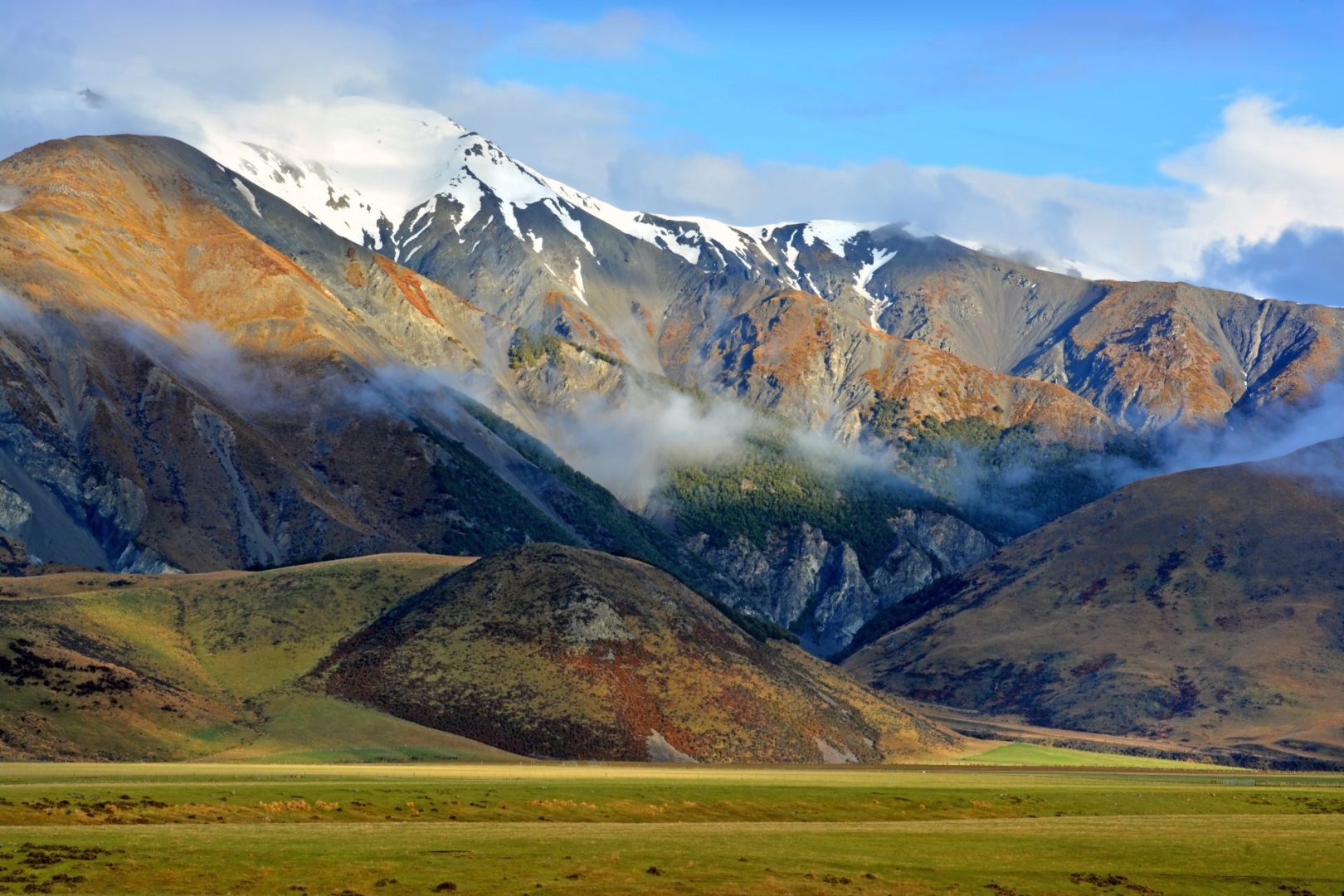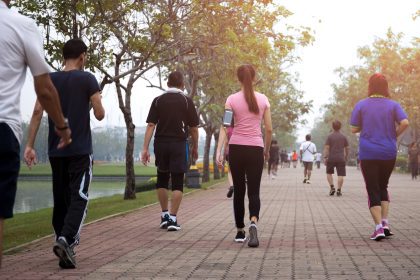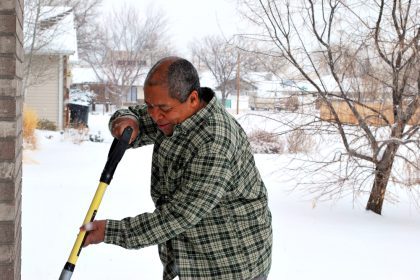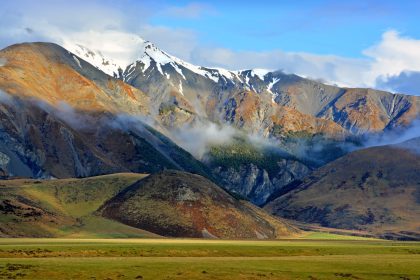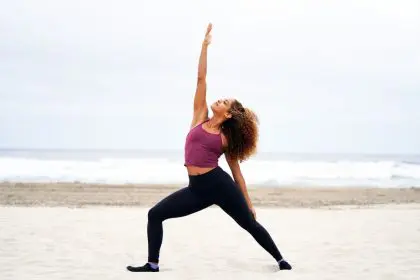San Francisco’s undulating landscape has long challenged residents and visitors alike, but the city’s fitness community has transformed these infamous inclines into coveted training grounds. The varied elevations that once frustrated early settlers now serve as natural gyms where endorphins flow as freely as the fog rolling in from the Pacific.
What makes San Francisco‘s topography so unique for fitness enthusiasts is the diversity of its hills—each with distinct character, elevation profile, and surrounding neighborhoods that create entirely different workout experiences. From lung-burning stair climbs to meditative yoga sessions with panoramic views, these natural formations have birthed specialized fitness communities that embrace rather than avoid the city’s vertical challenges.
Telegraph Hill delivers stair-climbing intensity
The first of San Francisco’s fitness-friendly slopes, Telegraph Hill rises 275 feet above the Bay, offering some of the most intense stair workouts in the city. The Filbert Street Steps—a wooden staircase of over 400 steps punctuated by gardens and historic cottages—serves as an outdoor StairMaster that delivers both cardiovascular benefits and remarkable views.
Local fitness groups meet at dawn before tourist crowds arrive, creating impromptu boot camps that incorporate the steps with bodyweight exercises. Personal trainers utilize the natural elevation for interval training, having clients sprint sections before recovering with strength moves at various landings.
Many participants track their climbs, with the most dedicated logging over 50 ascents weekly. The Coit Tower summit rewards climbers with 360-degree views that turn an ordinary workout into a mindful experience, demonstrating why this historic hill remains a fitness favorite despite being one of the city’s most visited attractions.
Russian Hill nurtures yoga communities with views
Russian Hill, peaking at approximately 300 feet, has evolved into the epicenter of San Francisco’s outdoor yoga movement. The hill’s multiple parks and viewpoints serve as natural studios where practitioners find both physical challenge and spiritual connection.
The slope’s gentler sections, particularly around Ina Coolbrith Park, host weekend morning yoga gatherings that have grown from informal meetups to organized communities. Instructors leverage the incline to deepen traditional poses, creating variations specific to hillside practice that enhance balance and core engagement.
The hill’s proximity to the water brings consistent breezes that add another element to practice, teaching adaptation and presence. Many studios located at the base organize “summit flows”—classes that begin with an invigorating climb and culminate in meditation sessions overlooking Alcatraz and the Golden Gate Bridge.
Nob Hill transforms urban running
The third fitness hub centers around Nob Hill, where San Francisco’s running community has redefined urban training. Rising 376 feet above sea level, this prestigious neighborhood combines steep ascents with long blocks that create natural interval courses.
Local running clubs have mapped various routes categorized by difficulty, with newcomers typically starting on the more gradual western slope before attempting the eastern face—a grade that approaches 30% in certain sections. These challenging inclines build lower body strength and explosive power that flat-terrain training simply cannot match.
The hill hosts several annual events, including predawn solstice runs and holiday-themed climbs that attract participants from across the Bay Area. Many professional athletes incorporate Nob Hill repeats into their training regimens when visiting the city, recognizing the unique conditioning benefits of these sustained climbs.
Regular runners develop intimate knowledge of each block, strategically planning routes to maximize training effects while avoiding the steepest sections during recovery periods. This hill-specific expertise becomes a badge of honor among the city’s running community.
Twin Peaks elevates cycling endurance
The fourth destination, Twin Peaks, stands as the ultimate challenge for San Francisco’s cycling enthusiasts. At 925 feet, these iconic summits provide longer, sustained climbs rare within city limits. The main access road winds approximately three miles from base to summit, offering a consistent grade that builds cardiovascular endurance and mental toughness.
Cycling clubs gather at Market Street before dawn, tackling the climb as morning fog creates surreal training conditions. The hill’s dual peaks allow for varied routes, with dedicated cyclists creating personalized challenges like “peak repeats”—multiple summit attempts in a single session that can accumulate thousands of feet of elevation gain.
The panoramic views from the top serve as natural recovery zones where riders regroup and refuel before descending. This cycling community has developed its own etiquette and traditions, including mid-week evening rides that culminate with lights appearing across the city below.
Many participants credit these climbs with transforming their overall cycling performance, noting that after conquering Twin Peaks regularly, other San Francisco inclines feel remarkably manageable.
Potrero Hill fosters cross-training innovation
The fifth fitness focal point, Potrero Hill, rises approximately 300 feet and has become the epicenter for cross-training innovation. Its varied terrain—combining steep streets, public staircases, and multiple parks—creates natural circuit-training opportunities that fitness groups have enthusiastically embraced.
Local coaches design neighborhood-wide workouts utilizing the hill’s features: sprint repeats on Connecticut Street, plyometric drills at Potrero Hill Recreation Center, and recovery jogs along flatter sections. The neighborhood’s industrial heritage inspires boot-camp-style workouts incorporating urban features like low walls and benches.
Weekend warriors travel from other districts to participate in these community sessions, which have evolved from informal gatherings to organized events with hundreds of participants. The hill’s proximity to downtown makes it accessible for lunchtime workouts, with many professionals incorporating quick hill circuits into their workday.
The fitness scene here reflects San Francisco’s innovative spirit, with instructors continuously developing new hill-specific exercises that leverage the natural inclines to maximize training efficiency.
Community connections strengthen across elevations
Beyond physical benefits, these hill-focused fitness communities foster meaningful social connections. Participants bond through shared accomplishment, whether completing a first uninterrupted climb or celebrating progress milestones. Many friendships formed during predawn workouts extend beyond exercise, creating support networks that enhance overall wellbeing.
Local businesses have embraced these active communities, with cafes serving as meetup points and recovery zones. Several sports apparel companies now design San Francisco-specific gear addressing the unique requirements of hill training—reflective elements for early morning visibility, lightweight layers for rapidly changing microclimates, and reinforced footwear for steep descents.
The city’s transportation department has responded to this fitness movement by improving pedestrian infrastructure around popular routes, installing better lighting on public staircases, and creating designated lanes that enhance safety for all hill users.
With growing recognition of outdoor exercise benefits, San Francisco’s hills have transformed from obstacles into assets that define the city’s unique fitness culture. These five distinctive elevations—each fostering specialized communities and training styles—demonstrate how urban landscapes can inspire physical activity when embraced rather than avoided.
For residents and visitors alike, San Francisco’s hills offer natural resistance training that builds both physical strength and mental resilience—proving that sometimes the most effective gym doesn’t have walls, just spectacular views and a good dose of gravity.

